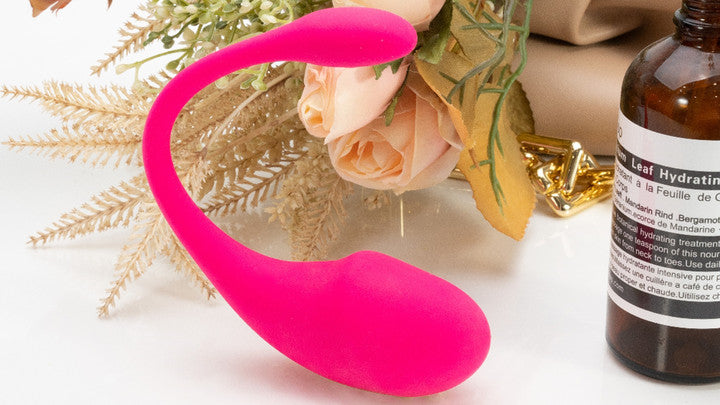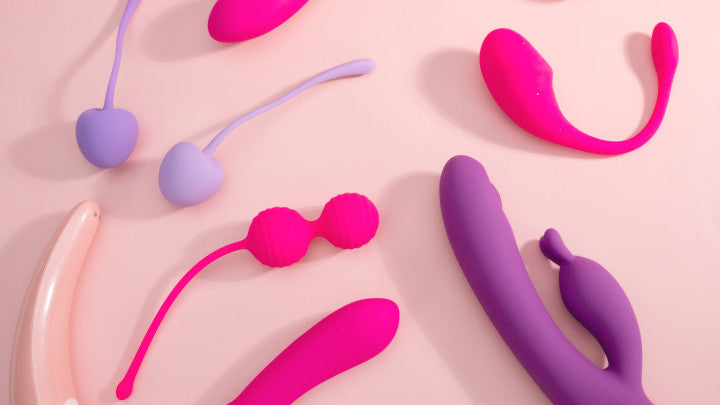Sex toys come in many types, like vibrators, dildos, anal toys, and more. These toys come in direct contact with your bodily fluids and must be cleaned regularly and properly. It's of dire importance to clean them properly. Here is a step-by-step guide on how to clean sex toys properly. If sex toys are not cleaned properly, they can get bacteria buildup and pathogens leading to infections in the genitalia area.
Should you clean sex toys after each use?
As stated above, learning how to clean sex toys properly is very important and should be cleaned after every use. If sex toys are improperly cleaned, bacteria will be left behind and can multiply quickly. Gentelia tissue is susceptible, and not cleaning your sex toys can cause fungi to build and bacteria. This may cause yeast infections, Urinary Tract Infections, and bacterial vaginosis flare-ups. These infections are very uncomfortable, and sometimes a doctor must treat them. So, is learning how to clean your sex toys important? Yes, it is and should be done after every use.
Materials of Sex toys
Some typical materials used in sex toys affect how you clean them. Below is a short list of some popular materials used in sex toy production. This will also help you understand how to clean your sex toys properly and why.
- Silicone– This material is the safest on the market today. Silicone is used for many toys due to its solid and coated fabric. Many vibrators are made from silicone because of how stable it is. Some of the strengths of this toy are that it carries powerful vibrations and is great for penetration. The vibrator slowly releases heat so your body can warm naturally. Silicone is also a non-porous material making it smooth to the touch depending on what type of vibrator you buy. Silicone stops bacteria from spreading and retaining on the surface.
- Synthetic Skin– This material is called “Cyber Skin” or “Softer Skin.” Synthetic skin is made with plastic, silicone, rubber, and latex. It’s like an all-in-one material, your sex toy. These are known for their impressive life-like appearance. These are great for gender play but a little more expensive. Synthetic Skins require more detailed upkeep when storing and cleaning them.
- Soft Plastic – This material is the most affordable; soft plastic is phthalate-free and latex-free, which is gentler for your body.
- Latex is the most sought-after material in adult products and sex toys. This is made with natural rubber from trees. One of the most popular is latex, but the price is average and sometimes a little expensive.
- Nylon – Nylon is an alternative to leather. This material is easier to care for and is machine washable but do not put it in the dryer. Instead, blow dry it for easier and safer cleanup.
- Vinyl – Vinyl is also an alternative to leather. This material is used in a good many motorized toys. Vinyl is vulnerable to heat. So, you must be careful where you store it.
- Leather – There are many grades of leather, like full-grained or bonded. Leather is the symbol for almost all sexy industries. It can be rather hard to clean due to the stitching, sewing, and seaming of making a piece of leather. Unique products would have to be ordered to learn how to clean sex toys in leather.
- Suede – Floggers, whips, and other toys are made with Suede. It has a grainy texture used for forced sharp penetration. If your toy becomes wet during play, hang them up to dry. Then use a suede brush to bring the grain back into the material.
- Hard Plastic – Many sex toys are made from hard plastic. Vibrators are one of them because of their ability to carry vibrations well. Hard plastic is used in some, but not all, of the vibrators on the market. The hard plastic is easy to clean with soap and water.
The materials were just a little information on the types of materials used in sex toys and how to clean sex toys by the material base. There is more than was covered, but you get the idea.
Common Mistakes to avoid when cleaning sex toys
As we explore and try new things, we must be aware of dangers and safely handle anything we buy. That is why care instruction comes in every package you buy to give you the information you need for good care of your items. Here is a list of some common mistakes that are made when learning how to clean sex toys. If any of these mistakes are made, it can lead to infections and doctor bills. It is essential to be innovative and learn how to clean your sex toys. Commit to cleaning your toys after every use.
One mistake that is commonly made is not paying attention if your toy is waterproof or not. Putting a non-waterproof toy in water will break the toy. Yes, it seems cliché. You should know not to put non-waterproof toys in the water. However, you do not know how many people do that.
Are you buying a new toy? Excited to try it out well; make sure you clean your toy before use due to shipping and packaging. Dust and chemicals can accumulate on the item, which could lead to an infection.
DO NOT dry sex toys with a towel. Towels leave debris behind. Use a blow dryer to dry the toy before storing away.
DO NOT use any bleach or scented soap on your toy. They can damage your toy and leave a residue causing infections.
Storing in a drawer? Often people do, and it is widespread to do so. Your drawer is loaded with bacteria buildup. You can keep it in a clean waterproof bag in your drawer to avoid bacteria buildup on your sex toy.
How to clean sex toys safely and efficiently
Cleaning your sex toys efficiently and adequately has a good bit of dependency on the type of material. Below is a list of a few materials used in sex toys and how to clean your sex toys properly.
Non-Porous –Stainless steel, glass, hard plastic, and silicone.
- Glass – Soap and water, and they are dishwasher safe. Make sure you do not expose yourself to extreme temperatures.
- Hard Plastic – Try to clean with antibacterial soap and water.
- Stainless Steel – Do not put electrical components in water. Suppose the sex toy has an electrical element in it. Take it out. Soak or boil for 10 minutes in a 10% bleach water solution or place in the dishwasher.
- Silicone – you have three options when it comes to cleaning silicone.
- Boil for 5 to 10 min
- Put in the top dishwasher rack.
- Wash with antibacterial Soap and water
Do not boil silicone vibrators; it will destroy the mechanism of the vibrator.
Porous Materials – rubber, vinyl, cyber skin, leather and nylon.
- Rubber material – Porous and challenging to clean. Use condoms with these sorts of materials.
- Cyberskin/Vinyl – Dildosare the most popular made with this material. Wash them carefully and gently with only warm water, with no soap. Air dry them and put a little cornstarch on them to prevent stickiness.
- Nylon – Machine- hand washed or washed with mild antibacterial soap.
- Leather – Use a damp cloth or leather cleaner but do not soak! After cleaning, recondition with a leather conditioner and use clear nail polish on the metal parts.



Leave a comment
This site is protected by hCaptcha and the hCaptcha Privacy Policy and Terms of Service apply.